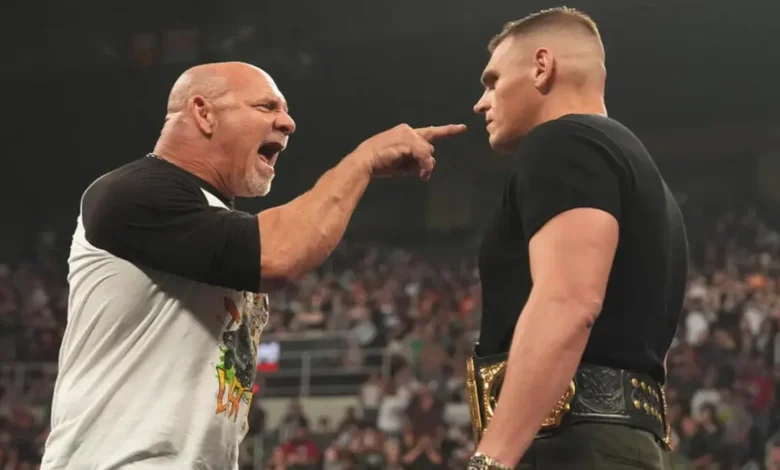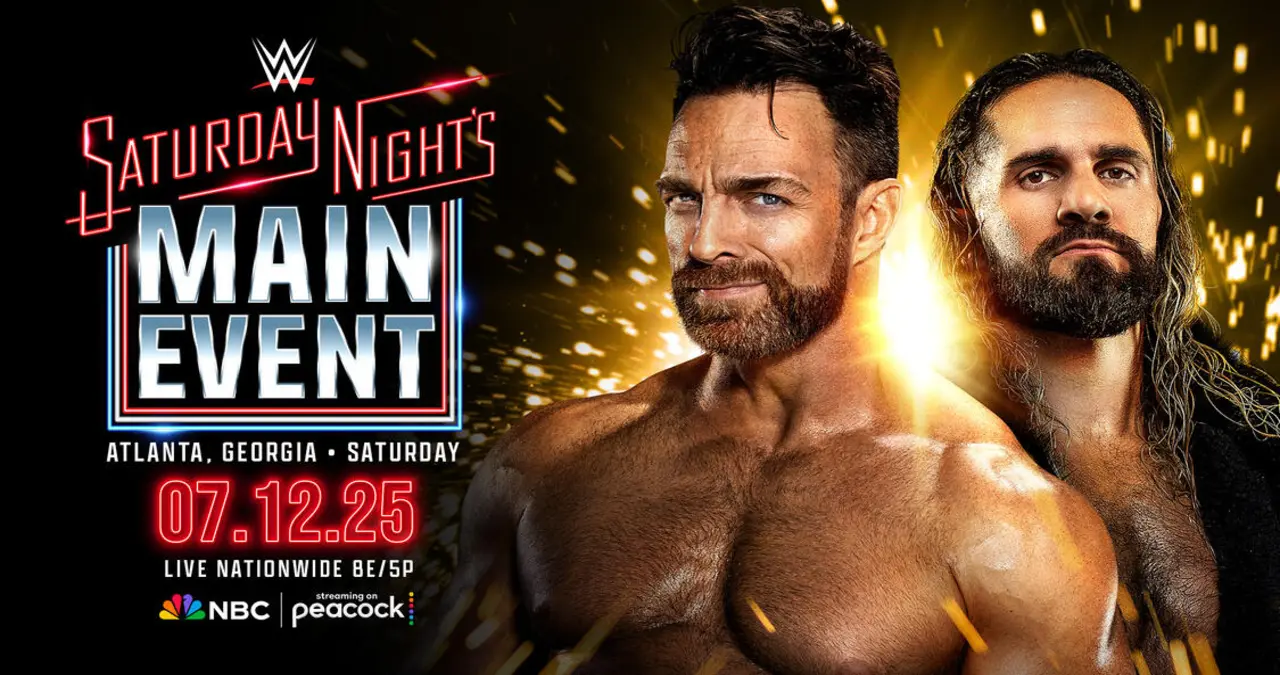
Saturday Night Main Event: A Legendary Chapter in Wrestling History
Saturday Night Main Event: When it comes to the golden age of professional wrestling, few television shows have left a mark as lasting as Saturday Night Main Event. A staple for fans during the boom of the eighties and early nineties, this program brought larger-than-life characters and jaw-dropping action right into living rooms across America. Unlike the typical wrestling shows aired on cable, Saturday Night Main Event was aired on network television, making it a rare and exciting event that brought the spectacle of the squared circle to a broader audience.
Backed by a dynamic partnership between NBC and the World Wrestling Federation, now known as WWE, the show served as both an entertainment and marketing powerhouse. It played a significant role in catapulting the WWF into mainstream pop culture and introduced a generation of viewers to iconic figures like Hulk Hogan, Randy Savage, and Andre the Giant. This wasn’t just a wrestling program; it was a cultural phenomenon.
The Origins of Saturday Night Main Event
The debut of Saturday Night Main Event in the mid-eighties was a groundbreaking move. At the time, professional wrestling was riding high on a wave of popularity, and Vince McMahon’s vision of turning wrestling into a national entertainment brand was taking form. NBC saw the opportunity and jumped on board, offering a platform that would rival even the biggest sports events on TV.
Replacing reruns of Saturday Night Live on select weekends, Saturday Night Main Event was an instant success. The show’s timing couldn’t have been better. With stars like Hulk Hogan at the peak of their popularity and compelling storylines that drew in both kids and adults, the program quickly became must-see TV. It was the first time in years that wrestling had returned to prime-time network television, and it made a massive splash.
Format and Presentation Style
Unlike weekly wrestling shows that followed a set routine, Saturday Night Main Event had a flair for the dramatic. The show was typically filmed before a live audience and then aired later, which allowed producers to fine-tune the final product for maximum impact. The matches were high-stakes and often featured championship bouts or major storyline developments.
The show was known for its strong opening segments, often showcasing interviews or behind-the-scenes vignettes that added to the drama. Bright lights, rock music, and fast-paced editing gave it an energetic vibe. Each episode felt like an event, and that’s what made it so special. Fans knew they weren’t getting a standard wrestling show; they were watching something with weight and importance.
Key Superstars Who Defined the Show
There is no discussing Saturday Night Main Event without mentioning the larger-than-life superstars who made it iconic. Hulk Hogan was undoubtedly the face of the show in its early years. His charisma, energy, and popularity made him a perfect fit for network TV, and he headlined many of the most memorable episodes.
Alongside Hogan, names like “Macho Man” Randy Savage, Andre the Giant, The Ultimate Warrior, and Rowdy Roddy Piper brought unique characters and in-ring skills that captivated audiences. These performers weren’t just athletes; they were entertainers, and they knew how to work the crowd both in and out of the ring. Their feuds often spilled over from other WWF programming into Saturday Night Main Event, giving fans even more incentive to tune in.
Memorable Matches and Moments
Throughout its run, Saturday Night Main Event delivered numerous unforgettable moments. One standout episode featured the long-anticipated clash between Hulk Hogan and Andre the Giant, hyped as a battle of epic proportions. The build-up to this showdown was masterfully crafted, and while it wasn’t their WrestleMania encounter, the match still brought in massive ratings and showcased just how effective the program could be at creating anticipation.
Another classic moment came when Randy Savage and Hulk Hogan’s alliance as the Mega Powers began to crumble. The slow burn of tension, finally culminating in an emotional fallout, was storytelling at its finest. The drama unfolded in such a cinematic way that it transcended the ring and became part of wrestling lore. These types of moments solidified the show’s legendary status.
Cultural Impact of Saturday Night Main Event
The cultural significance of Saturday Night’s Main Event can’t be overstated. During its original run, the show helped wrestling become mainstream. For many viewers, this was their first real exposure to the world of professional wrestling. It bridged the gap between sports and entertainment, mixing athletic competition with theatrical storytelling in a way that appealed to a wide audience.
The show also served as a springboard for WWF merchandise, video games, and pay-per-view events. It helped establish wrestling as more than just a niche interest. It was during these prime-time broadcasts that wrestling truly entered the pop culture lexicon, rubbing shoulders with sitcoms, movies, and music in terms of popularity.
Behind the Scenes: Production and Strategy
The production quality of Saturday Night Main Event was ahead of its time. NBC’s involvement ensured top-tier broadcasting standards, while the WWF brought its signature flair and promotional genius. Together, they created a show that didn’t just look good it felt like a major network event.
A lot of thought went into match selection, storyline progression, and even commercial placement. Every element of the show was engineered to maintain viewer attention. From the pre-match promos to the post-match interviews, the experience was seamless and thrilling. The creative strategy focused on high drama, big names, and making sure each episode felt like an unmissable event.
The Decline and Eventual Revival
As with many popular shows, Saturday Night Main Event eventually saw a decline. The late nineties brought a shift in audience tastes, and the wrestling landscape changed dramatically with the rise of edgier content from WWF’s Attitude Era and competition from WCW. Network television wasn’t the ideal home for the more provocative style that wrestling was leaning into.
Despite going off the air, the show never fully disappeared from fans’ memories. It was briefly revived in the mid-2000s, and while the reboot didn’t reach the heights of the original, it served as a nostalgic nod to an iconic era. WWE occasionally brings back the branding for special events, and its legacy remains deeply respected within the wrestling world.

The Legacy That Lives On
Even years after its last regular broadcast, the legacy of Saturday Night Main Event lives on. Wrestling fans still talk about classic episodes, dream matches, and unforgettable promos that aired during its run. It set a precedent for how professional wrestling could thrive on network television and showed that wrestling had a place among mainstream programming.
You can see its influence in modern shows that try to recapture that big-event atmosphere. WWE’s premium live events and even some of their weekly programming borrow elements pioneered by Saturday Night Main Event. The pacing, presentation, and hype-building are part of the DNA established back in those formative years.
Fan Reception and Nostalgia
Ask any long-time wrestling fan about Saturday Night Main Event, and you’re bound to get a smile. The show holds a special place in the hearts of those who grew up watching it. The nostalgia factor is huge, and many fans look back at the show as a defining piece of their wrestling fandom.
It wasn’t just about the matches; it was about the moments. Watching with family or friends, staying up late to catch the action, and being part of something that felt bigger than life those are the memories that stick. This emotional connection is what keeps the show’s legacy alive today.
Saturday Night Main Event and Modern Wrestling
In the current era, where streaming dominates and attention spans are shorter, the idea of a single event drawing millions of viewers on network television feels like a relic. But that’s what makes Saturday Night Main Event so remarkable. It succeeded in a way few wrestling shows ever have, and its success paved the way for the evolution of sports entertainment.
Modern wrestling promotions still look to the show as a model for how to create buzz, build anticipation, and deliver a memorable experience. While the media landscape has changed, the core elements that made Saturday Night’s Main Event special are still very much relevant.
Why It Still Matters Today
The enduring appeal of Saturday Night Main Event lies in what it represents: a time when wrestling felt magical. It was about storytelling, showmanship, and creating memories that lasted a lifetime. Today’s fans might have more content at their fingertips, but that sense of wonder and spectacle remains the gold standard.
For new fans curious about wrestling’s past or veterans looking to relive the glory days, Saturday Night Main Event is a treasure trove. It captures a unique moment in time when wrestling and mainstream entertainment perfectly collided. And for that, it remains one of the most beloved and influential shows in wrestling history.
Conclusion: A Timeless Classic in Wrestling History
Saturday Night Main Event isn’t just a piece of wrestling history; it’s a shining example of what happens when innovation, talent, and perfect timing come together. It elevated the wrestling industry, gave fans some of the most memorable moments in the business, and changed the way we view wrestling on television.
As fans continue to look back on its run with admiration and as newer audiences discover its brilliance through streaming platforms, one thing is clear: Saturday Night Main Event will forever be etched in the annals of sports entertainment. Its influence is still felt today, and its legacy is secure. Long live the magic of Saturday Night Main Event.







